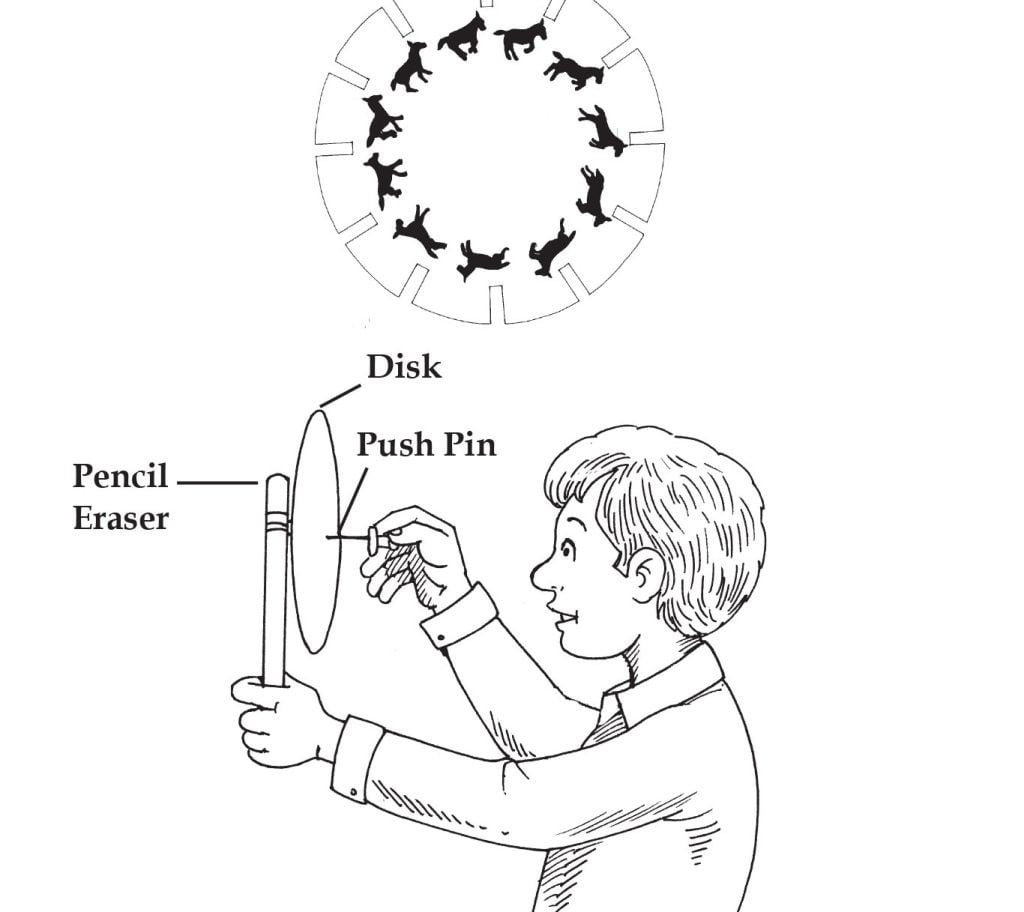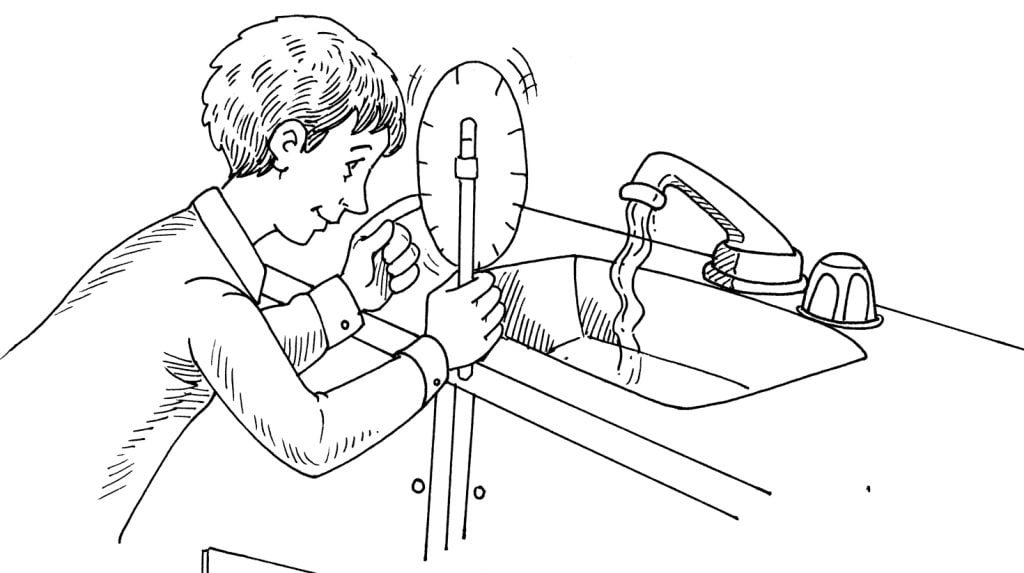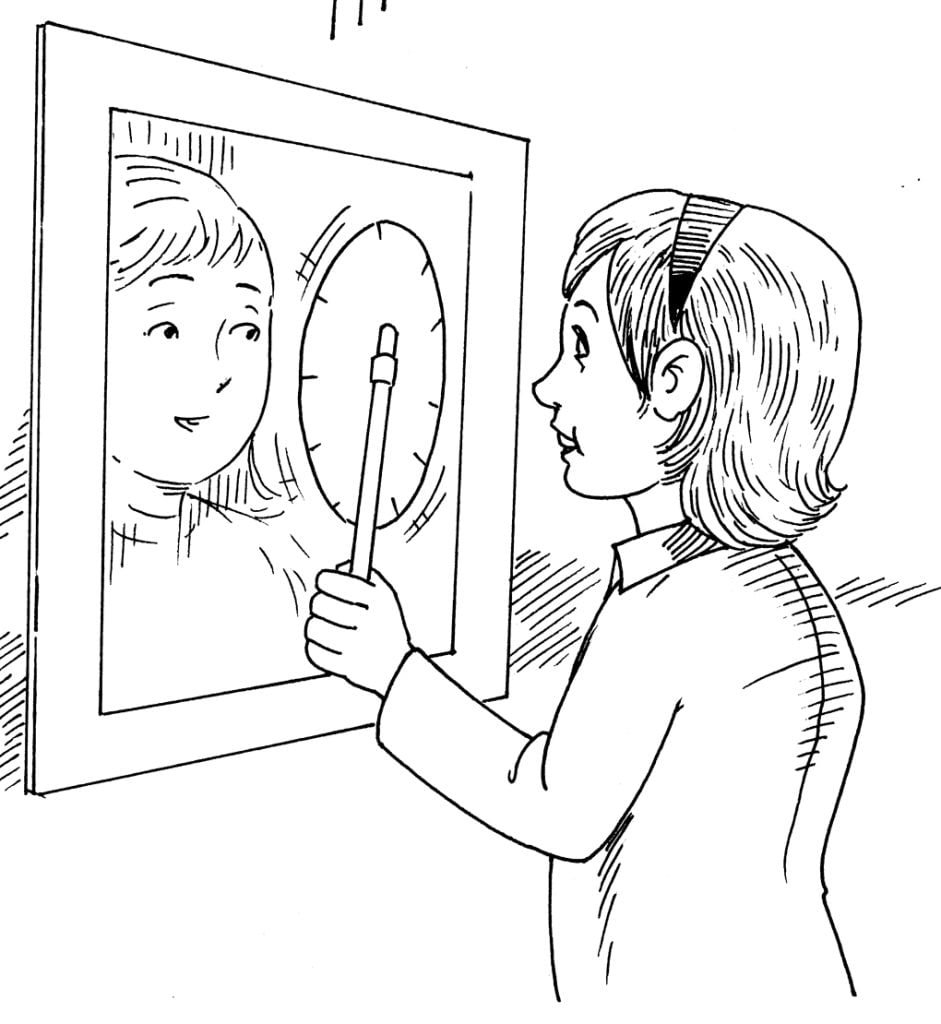


There is a limit to the amount of information that your brain can process. Think of a cartoon flipbook. When you observe a rapidly flipped sequence of drawings, it becomes impossible to distinguish individual frames. Instead, your brain gets fooled into “seeing” the illusion of continuous action.
In this experiment, you’ll construct a type of strobe machine. Unlike the dance floor lights, this device doesn’t depend upon flashes to create its visual trickery. Instead, the motion capture is produced by quick glimpses through rapidly spinning notches.
Things Required:
Pair of scissors
Pencil with eraser
Pushpin
Television screen
Kitchen sink (and faucet)
Mirror
Directions:
PART 1: Hold That Pose
Make a photocopy of the disc on the opposite page. Use a pair of scissors to cut out the disc notches. Insert a pushpin through the centre of the disc and anchor it to the side of an eraser. The disc should spin freely. Make sure you assemble this spinner so that the images may face away from the pencil.
First, we’ll use this strobe viewer to freeze motion. Turn on a television-set or computer screen. Stand across the room from the screen. Shut one eye and look through any of the notches at the screen. Spin the disc. Keep looking.
As the notches rotate into view, you’ll catch a quick glimpse of the screen. Does the appearance of the screen change? How does increasing the spin speed affect the appearance of the screen?
Adjust a cold water faucet so that a slow but steady trickle of droplets may fall into the sink. Observe this motion through the notches of the spinning disc. Can you freeze the droplets in midair?
If you are having trouble seeing the droplets, try this. Fill a large paper cup with water. Add several drops of dark food colouring. Over a sink, ask a friend to use a pushpin in order to punch a hole in the bottom of the cup. Use your spinning disc to observe this stream of coloured droplets.
PART 2: Movie Magic
Stand in front of a mirror. Look through one of the notches. Observe the reflected pattern of horses. Spin the disc. Keep looking through the notches. What do you see?
This Is What Happens:
Motion that you observe on a TV-screen (or movie theatre or flipbook) is an illusion. It is created, by a series of rapidly changing frames. Onscreen, these electronic images get “redrawn” 30 times per second. At this rate, your brain can’t distinguish individual frames. In its confusion, your brain produces the illusion of smooth motion.
This strobe viewer can capture a quick glimpse of partially refreshed screens. The black bands that you observe are part of a series of incomplete screens, all captured at the same stage of refreshing.
Like the “refreshing screen,” the falling droplets can also appear frozen. To produce the freeze, each quick glimpse must catch the next droplet in the same position as the previous one. This produces the Illusion of a single droplet that remains in midair. To make the droplet appear to go up, each glimpse must catch the next droplet at a slightly higher position than the previous one.
Your strobe device can also be used to produce the illusion of animation. As the disc spins in front of a mirror, it offers a quick glimpse of the reflected horse images. At a fast enough speed, your brain can’t distinguish the individual drawings. Instead, it blends the sequence of rapidly changing images into the illusion of smooth, animated motion.

